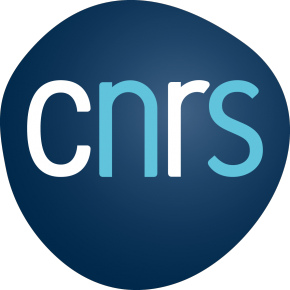Computational vision is one of the most challenging research domains in the engineering sciences. The aim is to reproduce human visual perception through intelligent processing of visual data.
CVN aims to propose innovative techniques towards the automatic structuring, interpretation and modelling of big (visual) data. CVN is associated with Inria Paris-Saclay through a joint research project team (OPIS). Researchers of CVN are also members of the Fédération de Mathématiques de CentraleSupélec (FR CNRS 3487). Our primary objective is to remain a reference center of international scientific excellence and to contribute significantly to the theory and practice in the field of computer vision, artificial intelligence, and (bio)medical imaging.
Research themes
OPTIMIZATION
Variational problems requiring the estimation of a very large number of variables have now to be tackled, especially in the field of inverse problems (e.g., ≥ 109 variables in 3D imaging). In addition to the curse of dimensionality, another difficulty to overcome is that the cost function usually reads as the sum of several loss/regularization terms, possibly composed with large-size linear operators. These terms can be nonsmooth and/or nonconvex, as they may serve to promote the sparsity of the sought solution in some suitable representation or to fulfil some physical constraints. In such a challenging context, we develop advanced deterministic and stochastic optimization methods based on fixed point iterations, proximal techniques, majorization-minimisation (MM) approaches, and distributed/parallel implementations.
ARTIFICIAL INTELLIGENCE
Machine learning methods have led to impressive results in various domains of Data Science. Nevertheless, the fundamental reasons for their excellent performance are often still poorly understood. We are developing robust, explainable, and efficient inference methods. Deep neural networks are the current state-of-the-art methods for solving a wide range of diverse tasks in signal/image classification or regression. We are working on reliable design and learning techniques for neural networks. We address challenges raised by partially annotated data and weakly supervised learning. Machine learning on graphs is also an important task with a plethora of practical applications. Our goal is to develop a systematic framework for large-scale data mining and representation learning on graphs.
IMAGE PROCESSING
Imaging devices provide a huge amount of information at various scales thanks to a wide range of modalities (MRI, Xray, PET, ultrasound, microscopy, …). These images can be multispectral, volumetric or correspond to sequences of 2D or 3D fields. Our group has developed long-term expertise in image analysis, segmentation, denoising, restoration, and reconstruction. Advanced image models are built thanks to convex or nonconvex variational approaches. Bayesian methods are also employed, as well as techniques based on mathematical morphology and graphs.
Application domains
- Complex industrial systems: automation, optical flow, non-destructive control, robotics
- Health: computer-aided diagnostics, computer-aided surgery, image biomarkers
Academic Partners
Institut Gustave Roussy (FR), Kremin-Bicêtre Hospital (FR), Henri Mondor Hospital (FR), European Hospital Georges Pompidou (FR), Pitié-Salpêtrière Hospital (FR), Université Paris-Est Marne La Vallée (FR), École des Ponts-ParisTech (FR), North Caroline State University (USA), Stanford University (USA), StonyBrook University (USA), University of Pennsylvania (USA), University of California at Los Angeles (USA), Sup’Com Tunis (TU), Technical University of Munich (DE), Heriot-Watt University (UK), University of Edinburgh (UK), University College London (UK), Aalto University (Finland), Polithenica University (RO), Ecole Polytechnique de Montreal (CA), University of Toronto (CA), Indraprastha Information Institute of Technology, Hyderabad (IN), Aristotle University of Thessaloniki (GR), Polish Academy of Sciences (PO).
Partnerships and Collaborations
- DATAIA
- Bernoulli Lab
Industrial Partners
- CEA
- Essilor
- General Electric Healthcare
- Heartflow
- Safran
- Schneider Electric
- SNCF
- Thales
Key Figures 2023
- Faculty members and researchers: 8
- PhD students: 16
- Technical and administrative staff: 2
- Visiting professor: 1
- Publications (source Web of Science): 17
More information
Download the 2023 laboratory report HERE
Contact
Director: Jean-Christophe PESQUET
Email: Jean-Christophe.pesquet[at]centralesupelec.fr








